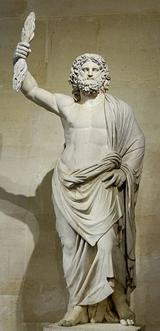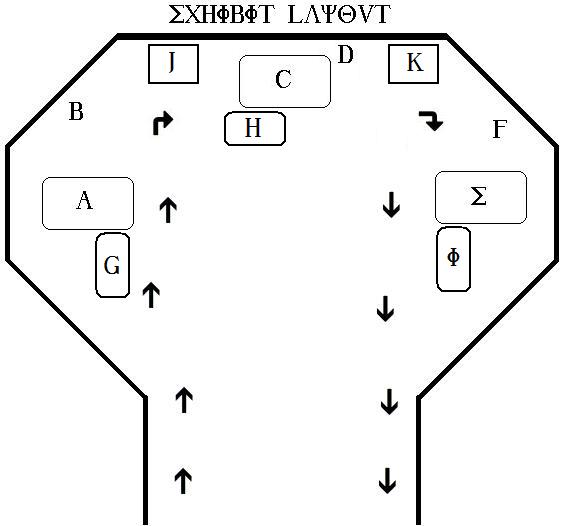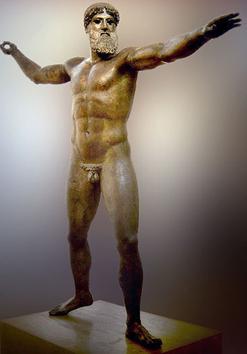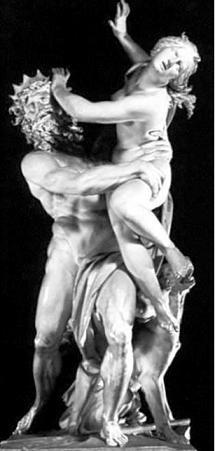














 Ancient Greek civilization had a profound and deep relationship on the development and history of western civilization and culture. At the heart of Greek civilization was the polis. The Greek’s many contributions to math, science, philosophy and other fields of human knowledge largely took place in the polis as did the early governments and democracies that made Greece so important to later western cultures. At the heart of the polis was the mythology of ancient Greece, a vast and colourful assortment of Gods and heroes still recognizable today. The myths and identities of each God allowed for the citizens of ancient Greece and outlet for expressing their values and philosophical ideas. As 19th century historian George Grote wrote, mythology “formed the entire mental stock of the early Greeks”. Myth was often infused with the history of a polis or community, and nobles often traced their genealogy back to gods and heroes, and in this way myth was a very real and very important part of Greek society. The ancient towns and cities of Greece had unique buildings, artefacts and forms of governments but each also contained it’s own culture and identity which were brought to life through myth. Each town and community had their own token god and each was unique in personality and power. The most powerful and greatest of the various Grecian gods, Zeus, Poseidon and Hades were worshipped and respected throughout the early Greek civilization. Rulers of the heavens, sea and underworld respectively the legends and myths of these important gods provide insight into the values of the Greek people and the views they held of their world and beyond. Dominant in the myths and legends that made up the culture of Greek society, the three gods represented Greek society as well as the famous writers and philosophers. In examining the three primary Greek Gods, Zeus, Poseidon & Hades, we can see how their unique traits and roles reflected different aspects of the ancient Greek society.
Ancient Greek civilization had a profound and deep relationship on the development and history of western civilization and culture. At the heart of Greek civilization was the polis. The Greek’s many contributions to math, science, philosophy and other fields of human knowledge largely took place in the polis as did the early governments and democracies that made Greece so important to later western cultures. At the heart of the polis was the mythology of ancient Greece, a vast and colourful assortment of Gods and heroes still recognizable today. The myths and identities of each God allowed for the citizens of ancient Greece and outlet for expressing their values and philosophical ideas. As 19th century historian George Grote wrote, mythology “formed the entire mental stock of the early Greeks”. Myth was often infused with the history of a polis or community, and nobles often traced their genealogy back to gods and heroes, and in this way myth was a very real and very important part of Greek society. The ancient towns and cities of Greece had unique buildings, artefacts and forms of governments but each also contained it’s own culture and identity which were brought to life through myth. Each town and community had their own token god and each was unique in personality and power. The most powerful and greatest of the various Grecian gods, Zeus, Poseidon and Hades were worshipped and respected throughout the early Greek civilization. Rulers of the heavens, sea and underworld respectively the legends and myths of these important gods provide insight into the values of the Greek people and the views they held of their world and beyond. Dominant in the myths and legends that made up the culture of Greek society, the three gods represented Greek society as well as the famous writers and philosophers. In examining the three primary Greek Gods, Zeus, Poseidon & Hades, we can see how their unique traits and roles reflected different aspects of the ancient Greek society.
Welcome to our interactive virtual museum!
We have chosen to showcase our museum exhibit electronically to whisk you away to ancient Greece, where you will see key artefacts and the information which accompanies it.
Below is a site plan of our museum exhibit
Legend
A. Artefact #5: “The Bronze statue from Artemision”
B. Artefact #6: Ancient Macedonian coin
C. Artefact #2: Statue of Zeus- Jupiter Smyrna
D. Artefact #1: Engraving of Zeus at Olympia- Philippe Galle
E. Artefact #4: Hades Rape of Persephone
F. Artefact #3: Hades and Persephone in the underworld - Vulci
G. Artefact Explanation
H. Artefact Explanation
I. Artefact Explanation
J. Primary Sources One and Two
K. Primary Source Three
HIST 1001B - Mike MacGowan 100687581, Jeremy Roberts 100811513, Jeff Mackey 100806580, Tope Adekola 100798519, Billy O'Reilly 100798902






